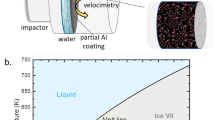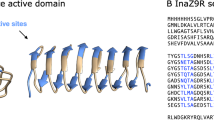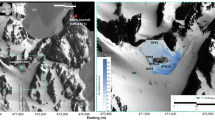Abstract
IN NATURE of January 11 Dr. R. T. Gunther describes a very beautiful freezing effect. I recently obtained a similar effect on a much larger scale. One of the large bottles, holding several litres, used for collecting rainfall in the London parks, in connection with the investigation of atmospheric pollution, was found, when brought into the laboratory for examination, to contain a hollow cylinder or annulus of ice, perforated with silvery air-tubes arranged, as Dr. Gunther remarks, for all the world like lines of force round a magnetic pole. We were unable to detect any visible specks of solid matter at the peripheral ends of the tubes; but these ends were pointed, whereas the inner ends were rounded and expanded, probably terminating thus where ice and the central core of water met. The surface of this central portion was covered with a scum of air-bubbles. One feature which was noticed particularly was that, in addition to the air-tubes, other channels filled with something (probably liquid water containing dissolved matter) were arranged radially throughout the mass.
This is a preview of subscription content, access via your institution
Access options
Subscribe to this journal
Receive 51 print issues and online access
$199.00 per year
only $3.90 per issue
Buy this article
- Purchase on SpringerLink
- Instant access to full article PDF
Prices may be subject to local taxes which are calculated during checkout
Similar content being viewed by others
Author information
Authors and Affiliations
Rights and permissions
About this article
Cite this article
COSTE, J. “Frost Thistles.”. Nature 98, 470 (1917). https://doi.org/10.1038/098470c0
Issue date:
DOI: https://doi.org/10.1038/098470c0



